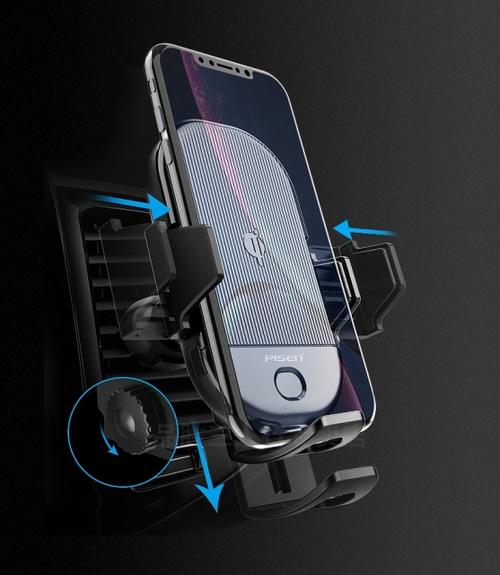
There are many types of car phone holders. Here we will take a look at the Scosche MagicMount, the Aukey magnetic car phone holder, the TechMatte CD-mounted base, and Scosche's universal vent mount. We'll also talk about which mounts are the most effective for holding your phone in the best way. A mount can be purchased for smartphones that are specially designed.
Scosche MagicMount
Scosche has some great phone holders that can be mounted in your car. MagicMount Pro magnetic car smartphone mount is compatible with most smartphones. The adhesive used to attach your phone to it is automotive-grade. Scosche also offers magnetic versions of the MagicMount to fit both Android and iPhone smartphones. Scosche also manufactures accessories for your mobile phone, other than car phone holders.
Scosche MagicMount can be used as a phone holder. It is easy and efficient. It attaches magnetically to any vehicle surface, and allows for rotation of the display. You can even place it on the dashboard without damaging it. Scosche MagicMount includes clear instructions and protective films. This product fits almost anywhere on your dashboard, and has a small footprint, so it is easy to move around. The mount uses a strong bond that is flexible and can be used by gorillas.

Aukey's magnetic phone holder
Aukey Car Magnet Phone Holder may be the perfect product for you. It can mount to your dashboard in flexible ways. It works by using magnetic force to keep your phone in its place. It comes with a detailed user manual that will help you to customize it to suit your needs. This handy device will ensure that you never lose your phone again, regardless of whether it is your cell phone or your GPS.
The magnetic car mount is not discrete, so it will stick out in your car. While the design isn’t particularly appealing, it does have a nice matte black rubber finish. It has a rotating bottom section that allows for the best viewing angle. The magnetic head holds the Samsung Galaxy S10 Plus as well as the Pixel 3 XL. It's worth noting that car phone mounts with more powerful magnets have been made in the past, but this particular design doesn't require the use of a phone holder.
TechMatte's CD-mounted base
TechMatte's magnetic mount can be used to securely hold your smartphone. Its telescopic arm is adjustable and rotates 360°. It is compatible with smartphones with screens from 3.5 to 7 inches. It has a quick-release button at the back that allows you to adjust the position of your phone. Mount installation is straightforward. Slide the phone into its CD slot, and then tighten a side knob.
Suction cups attach to most surfaces including dashboard vents, and the CD-mounted base car phone holders features. It is designed to be easily placed anywhere without damaging the car's interior. The only issue is the absence of articulation point, which could cause the phone holder's view to be blocked. TechMatte's car holder has many benefits, including an easy setup, strong magnetic grip, and a low cost.

Scosche's universal vent mount
Mounting your phone to a vehicle vent is one of most convenient ways to use your smartphone while driving. A Scosche universal vent mount car phone holder uses flexible plastic backing and a 360-degree swiveling ball-joint to adjust to any angle. This device works with both portrait and landscape orientations. Scosche offers lifetime technical support and a limited warranty.
Side mounts are designed to fit over ventslats and provide a secure grip. The side mount is not designed to hold your phone tightly. In addition, you have to check your phone periodically, especially while braking. This can be extremely annoying. A suction mount can help to avoid this. It can attach directly on the windshield or to an air conditioning vent.
FAQ
What qualifications are necessary to become a mechanic
You will need to pass several exams in order to become a mechanic. These include:
-
A general knowledge exam
-
Practical exam
-
An apprenticeship test
These tests are designed for you to understand the basic concepts and principles of mechanics before your start as a technician.
These tests will allow you to be a mechanic once you have passed them. An apprenticeship is still required. This will include training in the trade.
To learn all there is to know about fixing vehicles, you will need workshops and classes. Additionally, you will need to work with experienced mechanics.
To be a successful mechanic, you will need to have a high degree of concentration and attention. It is essential to pay attention to all aspects of vehicle repairs.
To become a successful mechanic you'll need patience. If you don’t like following directions, then this career path may not suit you.
If you enjoy cars and fixing them, this job could be a good fit for you.
How can I prepare myself for a mechanic apprenticeship
It is important that you understand the ramifications of your actions. It is important to know the basics of how cars work. This way, you know where to start when you go on your first day at the garage.
You also need to know how to fix simple problems such as broken lights, tires, etc.
You will be able to diagnose and repair problems yourself.
To put the pieces back together, you will also need to understand how they fit together.
Finally, you should be able use tools safely.
All of these factors will allow you to become a skilled mechanic.
What is the best way to learn about car mechanics
Auto mechanics don't require any knowledge. It's enough to know how to fix things. It's why many people begin to fix things by fitting brake pads or changing tires.
You will need to understand written instructions, read diagrams and follow the basic rules of good practices. Also, you will need to know how to tell if parts require replacing or repair.
You should not attempt to fix vehicles without proper training and guidance. This is especially true if you deal with expensive components such as engines or transmissions.
In fact, even though you won't need to know much about cars, you will need to thoroughly know the basics of mechanical engineering and physics. This is how you understand the mechanisms behind engines and brakes.
Noting that all situations are possible, it is important to be prepared. For example, you may find yourself working on a vehicle that has been involved in a serious accident. Also, you'll need to be familiar with dealing with accidents or breakdowns.
Finally, you need to be willing and able to quickly learn new skills. You will need to be able not only to diagnose problems but also to perform simple maintenance tasks like tightening bolts and nuts.
How long is an apprenticeship for an automotive mechanic?
An automotive mechanic apprenticeship takes around three years to complete. It includes two years of school and two years as an apprentice. The first year is used to learn all aspects of the trade including safety procedures and theory. You'll also learn the safe and efficient use of tools during this first year. After completing the first year, you'll then spend another year on-the-job training where you'll gain experience in different areas of the trade. These periods will also give you the chance to take formal courses.
The final year of this program is spent in obtaining qualifications and becoming certified in your field. These include NVQs, which are obtained after passing industry-specific exams. The HNCs (Higher National Certificates), on the other hand, cover general subjects like customer service and management. City & Guilds certificates can be obtained for individuals who want to learn certain trades.
Statistics
- According to the BLS, the median annual salary for automotive service technicians and mechanics in the United States was $44,050 in May 2020. (uti.edu)
- 52% of Mechanics in the United States think their salaries are enough for the cost of living in their area. (indeed.com)
- According to the BLS, total auto technician employment is expected to exceed 705,000 by 2030. (uti.edu)
External Links
How To
How to correctly diagnose your vehicle for repairs
To determine if your car needs repairs, you should first look at the symptoms that your car presents. Next, you can follow these steps in order to diagnose your car.
-
Check engine lights. Check the dashboard light indicators such as the engine light indicator, the oil pressure gauge, the battery light indicator, the coolant temperature gauge, and the RPM gauge. You may have a problem with your vehicle if any of the indicators are flashing for more than a few days.
-
Pay attention to the treads on your tires. Tires with worn treads could cause problems when handling or braking. It is also important to inspect the wheel treads. They should be clean, and they should be smooth. The best way to do this is to remove the wheels and take them off. A flashlight can be used to check how worn the treads are.
-
Check the level of brake fluid. You should always keep track of the amount of brake fluid in your vehicle. This helps ensure that your brakes operate properly. If the brake fluid level is low, your brakes might fail when you apply pressure to them.
-
The suspension system should be tested. Vehicles usually have a suspension system that helps absorb shocks and vibrations while driving. It improves control and allows for smoother accelerations or decelerations. If your vehicle has a suspension problem, it might feel wobbly or shake uncontrollably. To test whether your vehicle has a suspension issue, try putting weight on the front or rear axle and observe the movement.
-
Examine the steering column. Steering columns are used to connect the steering wheel to the rest of the vehicle's components. Sometimes, steering columns are damaged by accidents. It is recommended to replace any steering column that feels loose, or shakey.
-
The exhaust pipe should be observed. Exhaust pipes move gases from combustion chamber to atmosphere. If your exhaust pipe leaks or cracks, it will allow harmful fumes into your cabin. If your tailpipe bends, it is important to fix it immediately.
-
Look under your hood. Look underneath your hood to see if anything looks strange. There could be fluid leaking from your engine. If you smell something strange coming from your engine compartment you should call a professional technician.
-
The air filter should be checked. The air filter in your vehicle collects dirt and dust from the environment. Vehicles that have a dirty air filter will not run well. Replace your air filter regularly.
-
Make sure you check the fan belt. Your vehicle's fanbel connects the engine and transmission. If the fan belt is damaged, the engine won’t turn. It is easy to replace the belt. All you need are a screwdriver & pliers.
-
Make sure you inspect the radiator hoses and hoses. The radiator hose transports water from radiator to engine. If the hose becomes damaged or cracked, hot liquid can be emitted onto the engine. The hose can be repaired with a pair or needle-nosepliers, and a wire brush.
-
Be sure to inspect your windshield wipers. Windshield wipers use electricity for snow and rain removal. If they stop working, they could leave streaks on your window glass. Simply change the washer oil to fix the problem.
-
Make sure you check the cables. The battery cables provide power for the electrical systems in your car. Make sure you disconnect the negative cable before replacing batteries. Failure to do so can damage your alternator.
-
Be sure to check your headlights. Headlights are used to illuminate the road ahead. It can lead to poor visibility if they aren't working properly. You can check the bulbs to make sure they aren't burned out.
-
Check the lights. When you approach them at night, the lights warn other drivers. You may be distracted by the light and end up in an accident.
-
You should inspect your brakes. Brakes slow down your vehicle before a collision. If your brakes aren't working properly, you may lose control and crash into other cars.
-
Change the oil. Keep your engine lubricated with oil. This oil helps to prevent metal parts becoming too worn out. It is recommended to change the oil once a month.